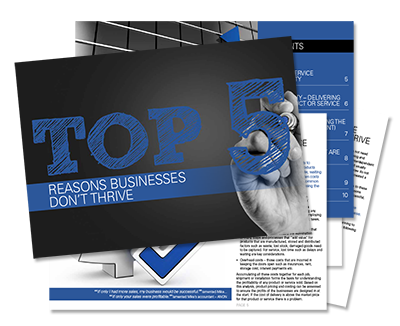HOW TO ADOPT AUTOMATION AND AI TO BOOST BUSINESS PRODUCTIVITY
Technology and industry 4.0 has really changed what’s possible in manufacturing by marrying physical production with smart digital technology.
This tech includes IT systems, the cloud, machine learning, the internet of things, and the ability to capture real-time business information and data. Then there’s software as a service, which has made everything more accessible and infinitely scalable. The result: better-connected company ecosystems and increased productivity.
But just how is it boosting productivity? Here are some of the key insights drawn from my recent podcast discussion with Stuart Ewin, founding director of Gestaltix and one of Australia’s leaders in work complexity reduction, process streamlining and robotic process automation.
Reducing complexity to improve productivity
Ultimately, manufacturing is all about productivity. It’s this reality that has driven process-thinking in the industry. But in order to improve productivity, you need to reduce complexity. Enter technology.
One thing that stood out talking to Stuart is that while we all know the technology is out there, many businesses in Australia tend to lack the knowledge and understanding around what’s actually possible when it comes to using it to reduce complexity and boost productivity.
So how can it be used?
AUTOMATING PROCESS WORKFLOWS
Process mapping is a critical step in increasing productivity. By providing insights into processes, you can identify bottlenecks, repetition and delays. You can then use this information to start brainstorming ideas for process improvement.
This can be done in old school way, using post-it notes, or you can move it to tech platforms. In fact, there’s a piece of software out there called Promapp® where you can replicate a hand-drawn process and create a digital solution in a day or two.
Many businesses already have software in-house they can use to automate workflows, such as SharePoint. One example of workflow automation in practice is using smart software robots to search for documents for you, for example, to find technical references and standards, that sort of thing.
Then there’s the $10,000 robot that sits on the shop floor doing the sort of work in minutes that takes people days to complete. These are both examples of automation worth considering.
There’s significant productivity gain in automating workflows – and this gain is around time. Quicker, human-error free processes allow you to deliver better, faster services. This improves the customer experience, where your focus should always be.
TURNING DATA INTO PREDICTIVE INSIGHTS
While most businesses are collecting data about their operations and many are automating it, not all are extracting enough value from it. Many are simply using data to monitor performance, keeping an eye on various metrics to avoid risk. However, this reactive approach isn’t enough in today’s market.
Data can also be used proactively to innovate. This involves using your data to pre-empt what customers want, to find new opportunities and to think about business differently. In other words, thinking about an issue and using data to prove or disprove a theory. Without this type of productivity, it can be hard to be adaptive and stay ahead.
Analysing reams of big data isn’t easy, plus interpretation can be subjective. This is where artificial intelligence (AI) comes in. By helping you crunch data at speed and find patterns often unseen by the human eye, it gives you fresh, fast knowledge – the key to timely more accurate decision making.
FREEING UP TIME TO CREATE VALUE
There’s often that back of the head worry that automation and robots will take over our jobs and human workers will become redundant.
But, the reality is that automating and adding AI into processes actually frees up managers and employees from the routine work, enabling them to instead focus on higher work – the creative work, the ideas work, the work that can drive the business forward.
I think myself and Stuart are in close agreement on how important it is for Australian manufacturers to take advantage of the opportunities available through technology. And to use automation and AI to really leverage how their businesses operate.
To listen to the full conversation with myself and Stuart, as well as other episodes, head to the Manufacturing Mastery podcast section of my website.
Are you ready to be the next success story?

GETTING THE BASICS RIGHT
Pandemic or no pandemic - avoid the common traps that lead to business failure with this free e-book
Submit your details and you'll be given immediate access to download this FREE e-book.
